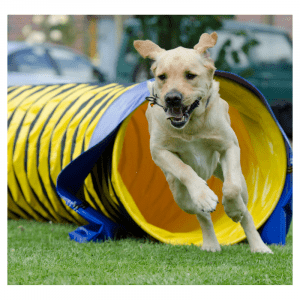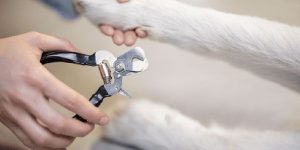Canine Dew Claws – Useful Facts.
The dewclaw on a dog, is situated on the side of the foot where it doesn’t touch the ground. It is more common for dogs have dew claws on their front legs, but some have them on the back legs too. Usually, dew claws don’t need any attention. However, sometimes they can cause problems. Read our Holidays4Dogs article, to find out all about canine dew claws.
In the modern dog, many people believe these dewclaws serve no real function, but to understand what these small appendages once were, we need to go back some 40 million years, to the early ancestors of the dog called the Miacis.
Evolutionary purpose of dew claws.
The Miacis were cat-like creatures that lived in trees. They had a fifth toe – with a similar function to the human thumb. The animals later evolved into a ground dwelling species, (the cynodictus), from which the dog then subsequently developed.
Because these animals became hunters of prey on the ground, they needed to have the ability to move at speed. Over time, these animals developed the ability to move swiftly. This change in their physiology allowed them to move on their ‘tiptoes’, without their heels touching the ground.
The modern dog has four toes which touch the ground. The fifth toe, the dew claw, is a left over remnant of the dog’s evolutionary history. The canine dew claw makes contact with the ground and helps the dog to maintain traction and balance.
Species that have honed this ability to run fast and efficiently are animals such as horses and deer, whose feet have evolved into hooves. Hooves, however, would not be advantageous to the dog. Dogs also use their feet to dig and manipulate objects.
Dew claws still have a function in the modern pet dog. Because these toes are ‘articulated’, they are capable of gripping the ground. There are five tendons attached to the claw. This suggests the the claw functions in a way which prevents twisting of the leg when the dog is turning, (particularly at speed).
A dog without dewclaws is at higher risk of the leg twisting and therefore developing carpal arthritis, or other injuries at the shoulder, or elbow.
Why are they removed?
 There are several reasons why some people advocate the removal of canine dew claws. Show dogs, for example, often routinely have them removed. The Kennel Club’s stance is that they do not support the removal of dew claws for aesthetic reasons. There is no breed standard that requires their removal.
There are several reasons why some people advocate the removal of canine dew claws. Show dogs, for example, often routinely have them removed. The Kennel Club’s stance is that they do not support the removal of dew claws for aesthetic reasons. There is no breed standard that requires their removal.
The general consensus nowadays is to leave dew claws intact. There may be some exceptions where the dewclaws are very ‘loose’. Some may have tiny bones, while others do not and are connected to the foot with a small flap of skin.
Where dogs compete in sports, such as agility, canine dew claws can assist the dog by making contact with the ground during tight turns at high speed.
Care of dew claws.
Similar to wisdom teeth in humans, dew claws can be problematic for some dogs and not others. Some claws never cause any problems, but others may be large and stick out a long way from the dog’s leg. This means the dog is more susceptible to claw damage.
but others may be large and stick out a long way from the dog’s leg. This means the dog is more susceptible to claw damage.
Breaks and tears are painful to the dog. Therefore, it is important to get to know your dog’s dew claws and inspect them regularly.
It is arguable whether injuries and accidents to dewclaws are really that common.
Dog claws are best kept short, to ensure they don’t catch on anything. Sometimes dew claw nails can grow so much they curl round far enough to dig into the dog’s skin.
If you are concerned about the condition of your dog’s claws, paws or feet, seek further advice from a qualified dog groomer or, your vet.



